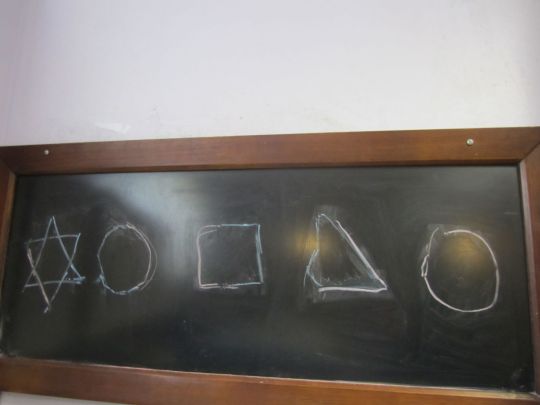Introducing Kids in Motion:
Now that you’ve heard about Kids in Motion sensory gym, we would like to introduce you to our gym. Here are short descriptions of various sensory issues exhibited in children. Below each description are pictures of swings and equipment utilized to address sensory issues in children.
The sensory system is broken up into three main areas: proprioceptive, tactile, and vestibular.
Proprioceptive sensations originate from receptors in muscles, tendons, and ligaments which surround joints. Proprioceptive receptors create body awareness by telling the brain where body parts are and what they are doing without looking. For example, a child who shows poor awareness of their body may have trouble orienting his arms and hands, legs and feet to get dressed, withdraw from movement experiences to avoid touch sensations, and/or purposely bump into objects and seek jumping and crashing opportunities. Below are some activities in our sensory gym which incorporate proprioceptive input:
Tactile sensations originate from receptors in the skin which are activated when we touch or are touched by something. Children who are hyposensitive, or lack adequate tactile sensation, may have trouble perceiving the physical properties of objects, such as texture, or shape. They may be unable to perform fine motor tasks such as using crayons, scissors and forks, and self-help tasks such as zipping and buttoning adequately. Children who are hypersensitive, or exhibit increased tactile awareness, may overreact to light touch sensations, exhibit anxiety, or aggression. Our therapists provide the necessary tactile input and tactile techniques for such children. Below are some activities in our sensory gym which incorporate tactile input:
Rice activity:
Playdough: Make your own playdough! Here is a link where you can find various homemade playdough recipes: www.playdoughrecipe.com.
Chalk board activity:
Dry erase board:
Vestibular sensations originate from the firing of the vestibular apparatus in each inner ear. Vestibular input sends signals to our brain that we are moving, situated on something that is moving, or surrounded by something that is moving. Vestibular is known as the movement sense. The vestibular apparatus also enables our brain to register the pull of gravity on our bodies. Children who experience a decreased tolerance for movement, may lose balance easily and appear clumsy, and/or experience discomfort in elevators and on escalators. Children who experience an increased tolerance for movement, may crave intense movement experiences, have trouble standing still or sitting in a seat, and feel the need to keep moving as much as possible in order to function. A child with gravitational insecurity may become anxious when his feet leave the ground, be fearful of climbing or descending stairs, and feel threatened by head movements, such as when shampooing one’s hair while taking a shower. Below are some activities in our sensory gym which incorporate vestibular input:
For more information or to set up an appointment for your child please call 718-601-7400 or email kidsinmotionot{at}optonline{dot}net.












Comments on: "Kids in Motion Gym" (1)
[…] Kids in Motion Gym (kidsinmotionot.wordpress.com) […]